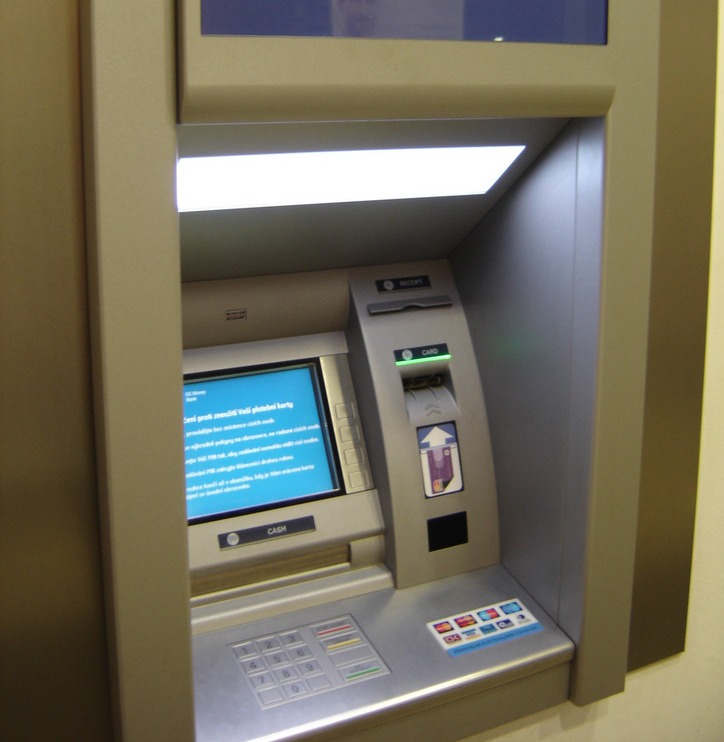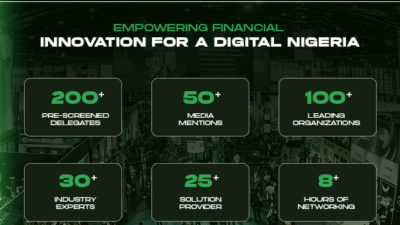AUSTIN KWESI OKERE, founder of Computer Warehouse Group (CWG) Plc, writes on how to improve the ATM customer experience in Nigeria. His piece written at the dawn of ATM in Nigeria still validly underscores the challenges in that sub-sector.
The ATM in Nigeria has gone from a mysterious machine of very high distrust to a basic essential. Understandably, being at the perceived epicentre of online fraud and Internet scams has made Nigerians exceedingly weary of this machine which spits cash at the punch of just four digits. My personal take though, is that there exist more advanced hacking centres outside of Nigeria. Common knowledge seems to suggest that parts of Eastern Europe and Asia top Nigeria by a country mile.
My wife and many others like her, who have vowed never to test the efficacy of the banks’ assurances on the safety and security of their ATM systems against the increasing ingenuity of fraudsters have now become unwilling converts due to the higher risk of being unceremoniously shut out of modern day transactions. Regulatory pressures a-la the Cashless Nigeria initiative by the Central Bank of Nigeria (CBN) have also played their part in this conspiracy against the conservatives. Hefty penalties have now being instituted on cash transactions beyond a certain threshold. Thankfully, she has broken ranks and acquired an ATM card just only last year.
The CBN has tried to allay the fears of Nigerians by enforcing on the banks additional security measures such as the installation ofanti-skimming devices, and two camera systems on all ATMs. The rational being that a fraudster who covers both cameras with his hands to avoid detection will have no spare to conduct his nefarious activities.
The average customer experience of the ATM user in Nigeria is still a tale of woes, mostly self-inflicted, and inadvertently by the same banks in whose major interest it should be to drive adoption to cut the relatively high cost of serving customers within the branch. Two very glaring examples; it is reported that on the eve of Christmas last year, customers looking for ATMs to withdraw cash for their festivities in the Gbagada area found to their dismay after visiting many ATMs and being greeted with the now familiar ‘temporary out of service’or‘Unable to dispense Cash’messages, that the only ATMs that seemed to be working on the whole axis were the UBA ATMs at the Charlie Boy Bus stop. Of course the queue had built up to the extent that faint hearted customers rather opted to go without cash than risk the possible consequences of a stampede. Similarly, on December 14, 2013 there were reports that virtually no ATM was working in the Badagry area.
These experiences are exacerbated majorly by the following factors; firstly, stagnation in the ATM population in spite of significant adoption rate by Nigerians. The ATM population in Nigeria has been stuck at the 11,000 mark for the past six years, resulting in an average of 11.39 ATMs per 100k adult population (adult population in Nigeria being about 56% or 95.2m according to a World Bank report on population). This is not unconnected to the Central Bank’s misadventure with the Independent ATM Deployers (IAD) experiment of 2008 that barred banks from deploying ATMs outside their branches. This resulted in the abrupt halt in the momentum of ATM deployment by Banks. This was largely due to the hasty conduct of the CBN in trying to swallow an elephant at one go. Noble as the intention was, a pilot scheme would have uncovered the soft underbelly of the strategy, the major shortcoming being the fact that the cash in the offsite ATMs would have been too expensive for the IADs to carry, and therefore compel them to charge customers very exorbitant rates or render them totally unprofitable at the flat rate of N100 per withdrawal,then allowed by the CBN.
Six years later we have less than the 11,800 achieved at the highpoint, because many banks had to abandon the long term rents secured for their offsite ATMs and wheeled the ATMs into warehouses and parking lots because the IADs could not afford the book value to take on the sites and ATMs. The operational lives of those ATMs, about a third of the total volume were cut short, as they were subsequently unusable two years later when the CBN rescinded her decision.
Comparatively, Indonesia with an adult population of about 90m, more than doubled their ATM installed base from 16.7k in 2011 to 36.5k in 2012, resulting in 37 ATMs per 100k adult population, about three time the ATM per adult capita in Nigeria. South Africa has 60 ATMs per 100k adult population, while the UK has 124 ATMs per 100k adult population. Nigeria clearly has a lot to do as the largest economy in Africa.
Secondly, the quality of notes in the ATM are a far cry from standard. In the early days, the ATM was where to go if you wanted crisp notes. Today, the notes in the ATM are sometimes worse that the change you receive at the flea market. This is underscored by the fact that the security features and the general quality of the naira could do with some enhancements. Dirty notes generally cause paper dirt to be lodged in sensitive parts of the ATM when it is dispensing cash, therefore resulting in more frequent system faults or currency jams. A telling revelation when we compare the work rate of the ATM in Nigeria to say the UK is that the Nigerian ATM has to dispense on the average five notes to one in the UK, if it is dispensing N1,000 notes and the UK one is dispensing £20 notes (£20 is approximately N5,000). This coupled with the low ATM density and challenged note quality contributes a lot to the frequent breakdowns and ‘unable to dispense cash’ notices.
Thirdly and very importantly, most ATMs in Nigeria are not under any guaranteed service level supportprogram. This is very shocking, and a serious anomaly by any stretch of the imagination. Banks inadvertently encourage this malaise. There is a notion that appraisal and compensation for ATM support heads in the E-banking departments seem to be heavily skewed on how much they can save in the ATM support costs. So they devise all means necessary to achieve this, even at the detriment of customer experience and the banks’ brand erosion. There is a blatant refusal to sign any Service Level Agreements (SLA) support for the ATMs in the first year of purchase under the illusion that warranty on the systems equates to SLA support. This results in fallacious claims of reduction in support costs.
This alluded cost efficiency cannot be further from the truth. Warranty and SLA support are quite different from each other as any owner of a car under warranty well knows. While SLA defines the time within which an ATM should be fixed or replaced in the event of a fault (usually two hours within urban areas and six hours in remote areas), warranty relies on a best effort basis for the replacement of factory defective parts.
Parts that are rendered unusable due to wear and tear, or as a result of exogenous effects such as power surges cannot be claimed under warranty (as sometimes the bank officials are wont to ferociously argue). For simplicity, warranty on ATMs is very similar to that on automobiles. If you drive your new car which carries a three year or 100,000km warranty to the dealer for a part replacement. Firstly they check that it is not normal wear and tear, and that it is not due to abnormal circumstances such as the wrong type of fuel or an accident. Then they take in the car and order the part. They call you when the part arrives, which takes an average of three months, and then slap you with a labour bill. This is the type of service that the Bank is hoodwinked to render to their hapless customers. It is worthy to note that warranty does not cover periodic maintenance of the machines. Imagine driving your warranty car for three years straight or 100,000km without any service or Oil change! Not opting even for the bare bones labour-only quarterlypreventive maintenance service does drastically shorten the lifespan of the ATMs. It is therefore not surprising that some relatively new ATMs needlessly break down and cause customers to spend eternity looking for a working one, or in an endless queue.
The average annual support spend on an ATM in Nigeria is $2,500, about half of what obtains in Indonesia and South Africa, both spending about $4,500 per ATM per annum. By investing the right amount to keep their systems properly maintained, they prolong the lives of their ATMs and ensure better customer experiences, which we readily testify to when we visit those countries.
Thirdly, we now know that most ATMs work with the windows operating system. Many are currently on the windows XP platform which has recently been announced by Microsoft as de-supported, and a new operating system, windows 7, announced to replace it. This means that any ATM that is not upgraded to the windows 7 operating system shall be vulnerable to viruses and fraud attacks, since the new security patches shall not work on them. Worldwide, 2.2m ATMs are vulnerable. In Nigeria a significant number of the installed base shall be affected. The solution is a simple upgrade of the operating system if the ATM is upgradable. This is free if the bank has been paying their software maintenance fee. They will otherwise have to incur huge capital costs to repurchase the new software licenses. Available data suggests that many banks have not kept up with the software support fees. A further complication is that certain category of ATMs cannot be upgraded because of non USB Interfaces. These have to be replaced, and will further deplete the already stretched ATM density.
Lastly, there are serious challenges in stable and consistent power supply, and network connectivity, both of which the ATM cannot operate without. There are also infrastructure challenges in access roads to ATMs in rural areas which cause support engineers to spend significantly more ‘travel time’ than ‘dwell time’ to fix machines. A possible solution will be for service providers to have enough support offices across the country than depend on engineers being dispatched only from the three commercial centers of Lagos, Port Harcourt and Abuja. Cross training support engineers on ATMs, inverters and network connectivity will ensure that the first engineer to arrive at the ATM can fix the fault and does not have to call another specialist. A monitoring system if installed by the provider would ensure that the ATM correctly diagnoses itself and advices on the correct spare part to be carried to site. A monitoring system will however, require client licenses on the ATMs for which maintenance fees are due to be paid, and which many banks shy away from.
Banks are by no means the only clog in the wheel of good ATM customer experience. Some of the blame lie squarely on the shoulders of the service providers. In a bid to win business at all costs they are ready to accept terms that tempt them to cut corners in quality of products and service delivery. For example, there is a need to install monitoring systems and a call centre to aid support efficacy. There is also a need to ensure that the custodians are sufficiently trained to provide the crucial first level support. The negligence of these will make the support process expensive, unwieldy and ineffective. This drives the proverbial ‘race to the bottom’ for all stakeholders. A decimation in the number of service providers or their replacement by uncertified operators willing to collect the cutthroat rates offered by the banks will not bode any good tidings for the banks nor their customers.
Another emerging class in the clog of ATM availability is the gang of Marauders who attempt to blow-up the ATMs to gain access to the cash in the safes. For this group, Banknote staining could be an effective prevention technique, in which the anticipated reward of the crime is removed by denying the benefits, by marking the cash stolen with special security ink. Of course the ink should be machine detectable to ensure that deposit machines reject stained notes.
Surprisingly, some customers are also culpable. Furiously banging the ATM when ‘it swallows your card’ or does not dispense the money on your transaction will not solve any problem. If anything at all, it will only compound the problem by taking that ATM out of service. In the rare instance of this anomaly, the right thing to do is to call the number on the ATM body or visit the bank. There are usually journal entries and time stamps that will prove that you were not paid what you have been inadvertently debited, and a routine for redress and refund instituted.
While acknowledging the significant progress that we have recorded in payment systems, underpinned by the opportunity for the average Nigerian to be availed of having access to the global installed base of ATMs, courtesy of his local bank ATM card, and without recourse to a foreign bank account and ATM card, there is still the need to ensure that charity truly begins at home. The above is not intended as an exercise in ATM service indictments, but rather a discourse that will help in the appreciation, and management of the root cause of the below average ATM customer experience in Nigeria from which we are all groaning.





























